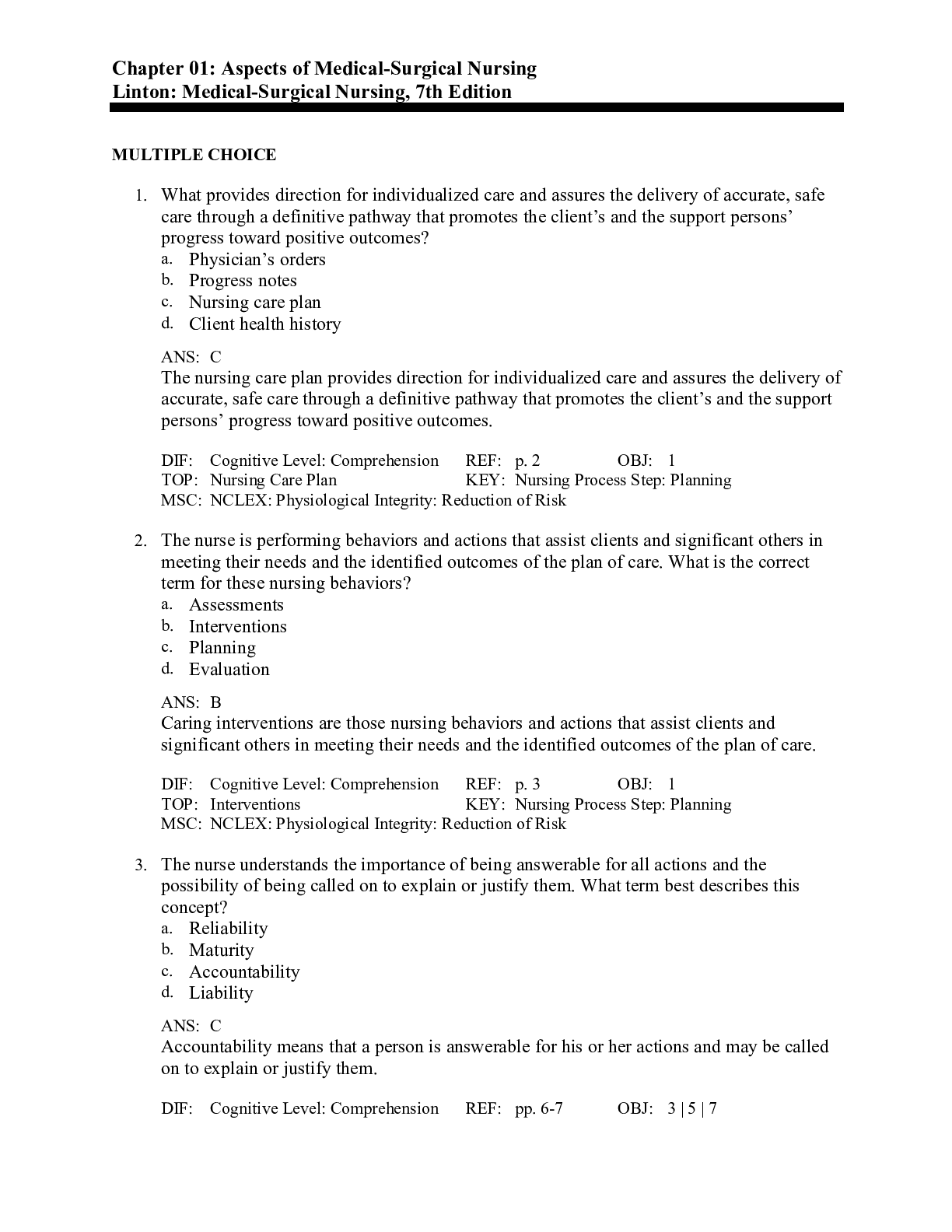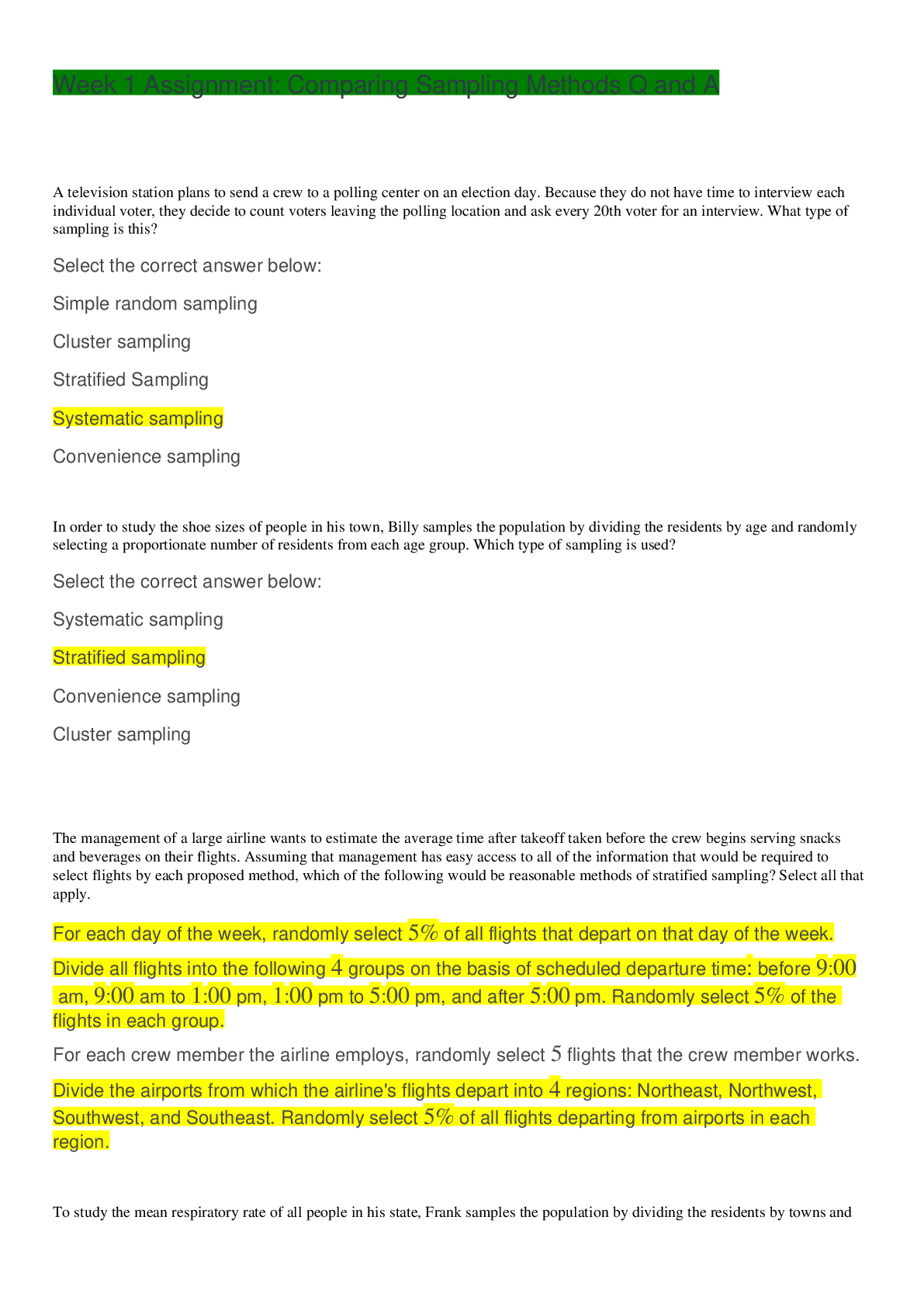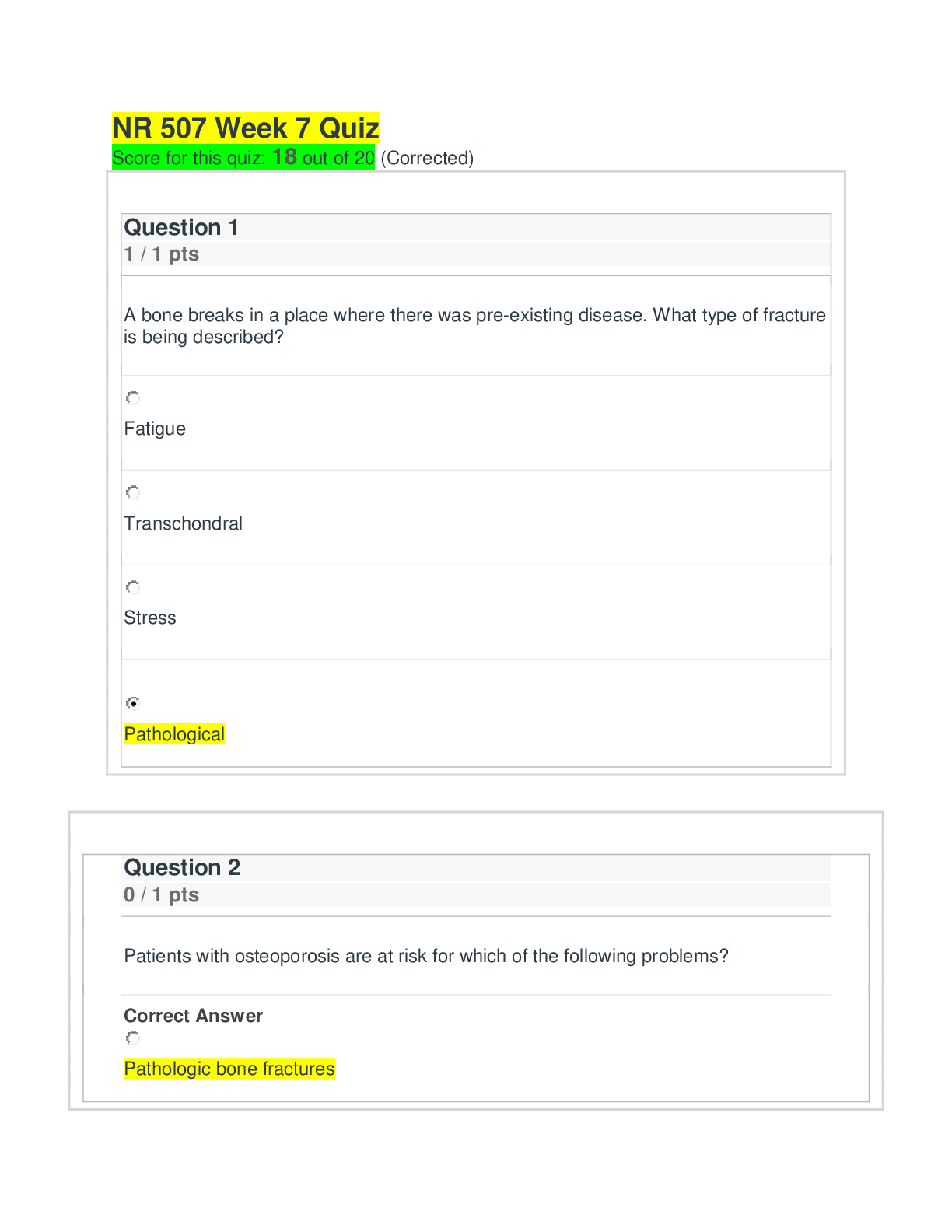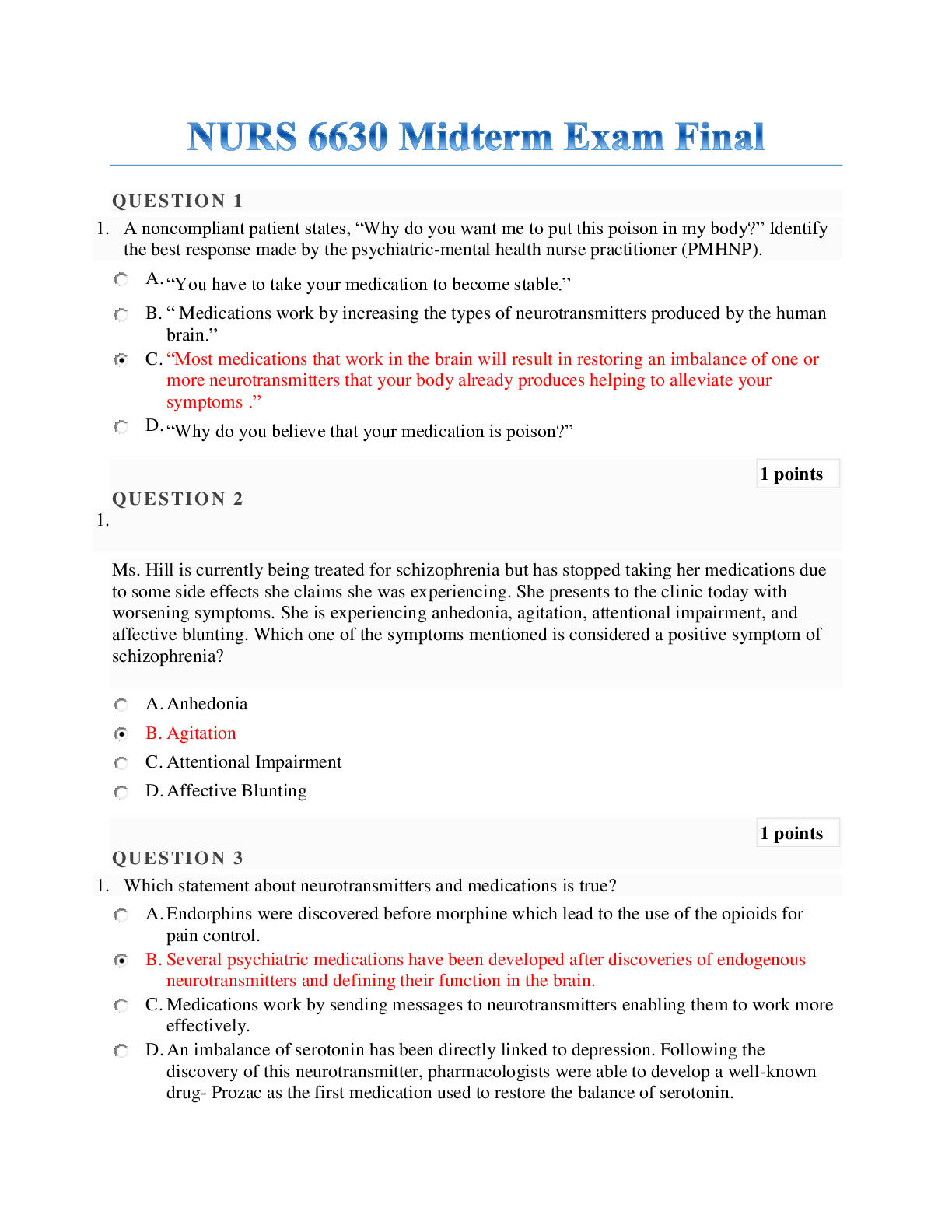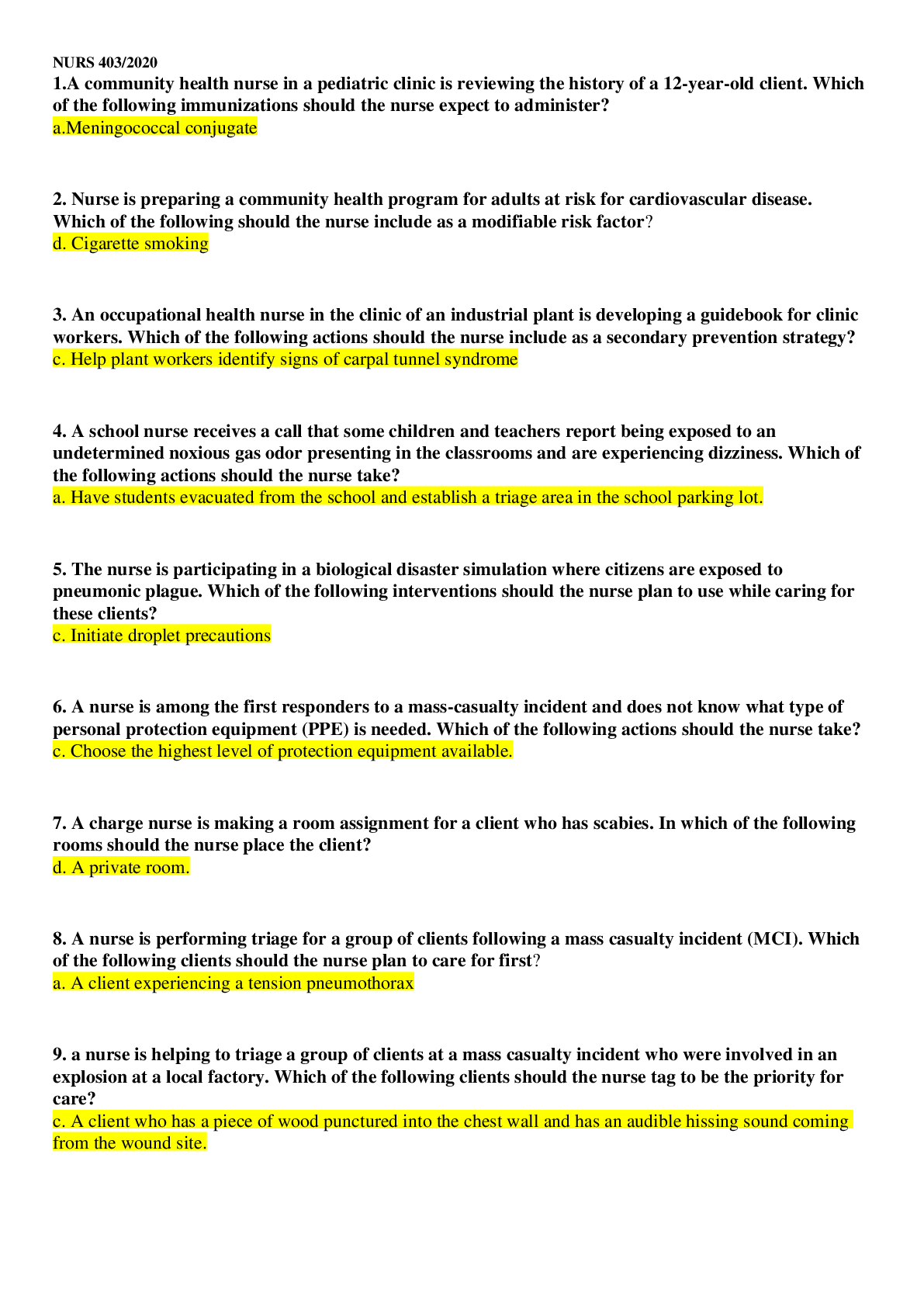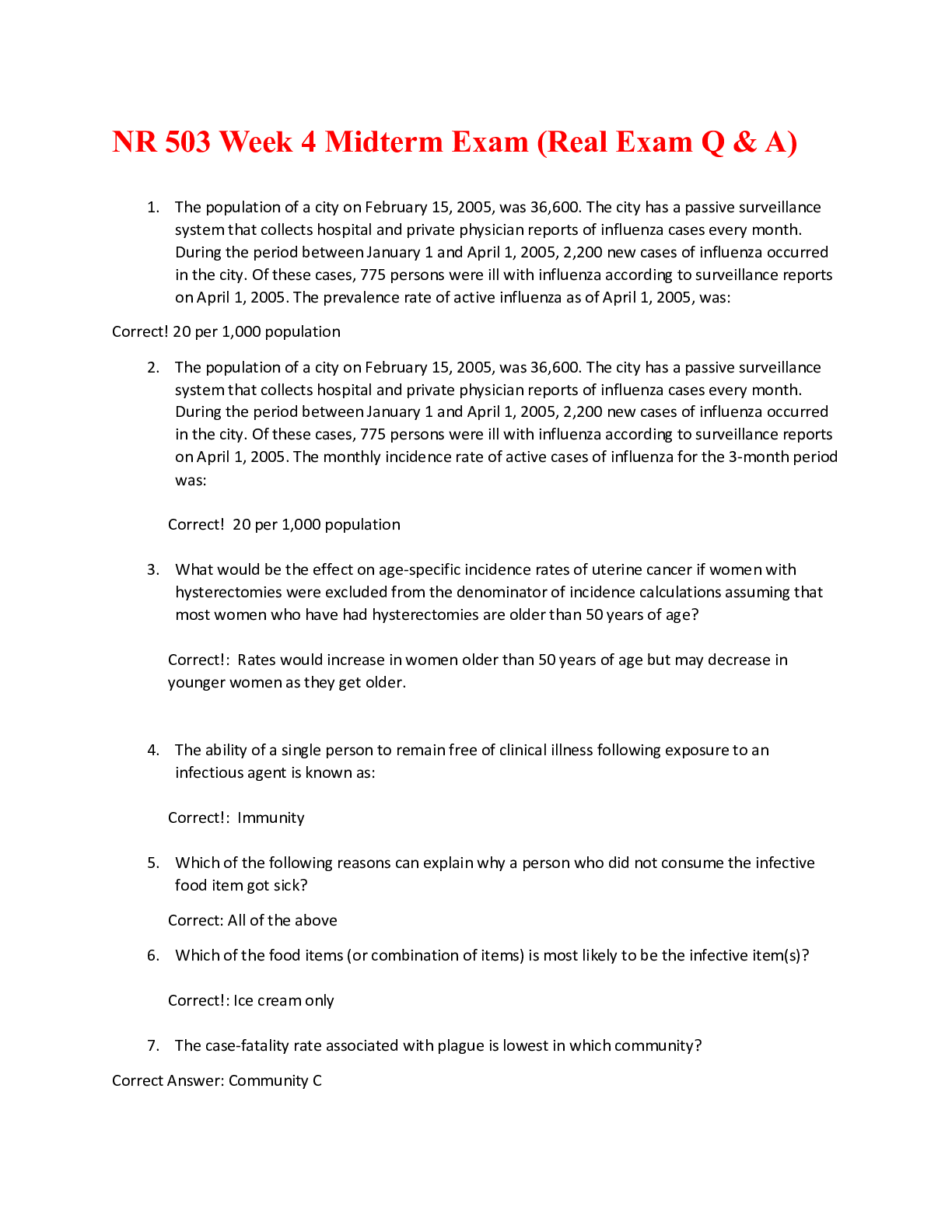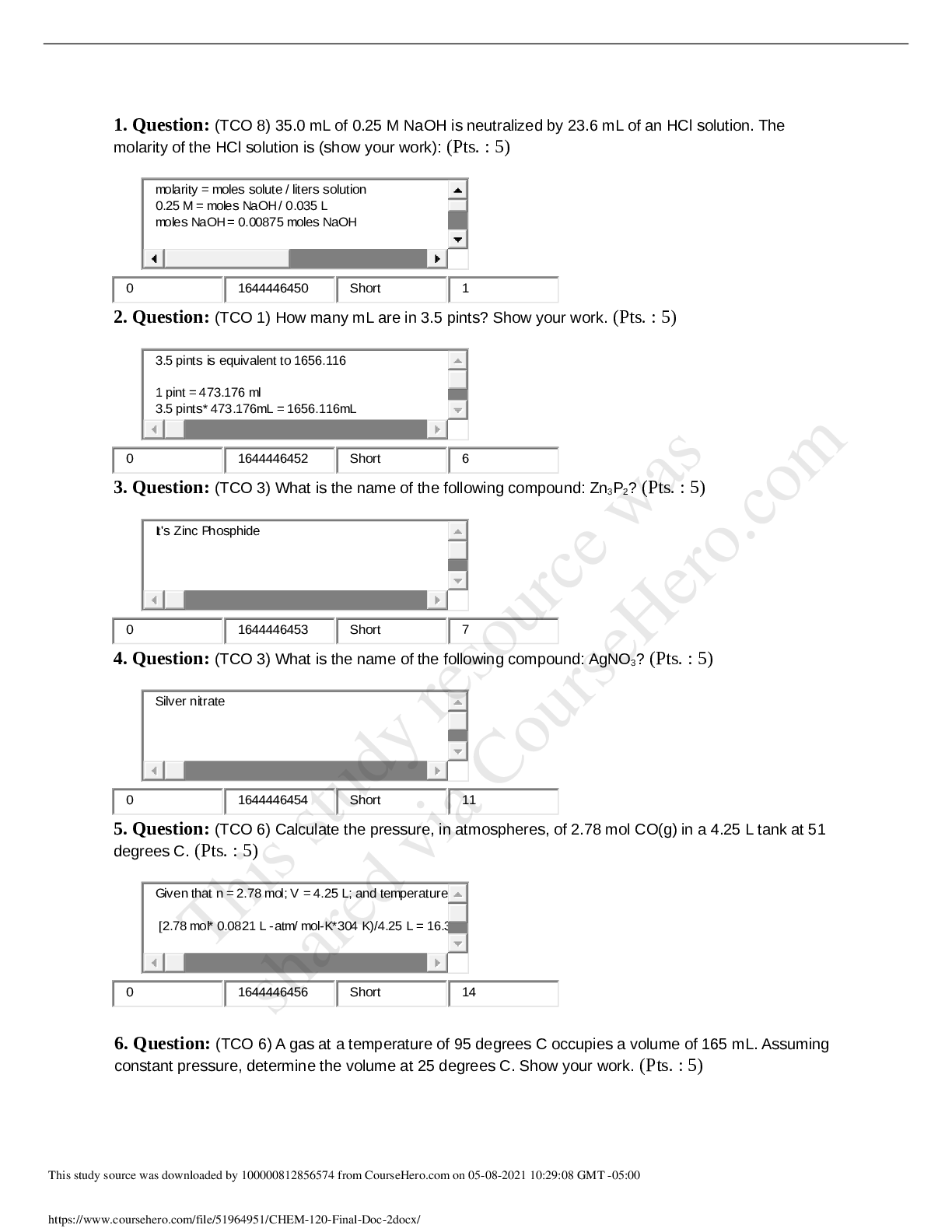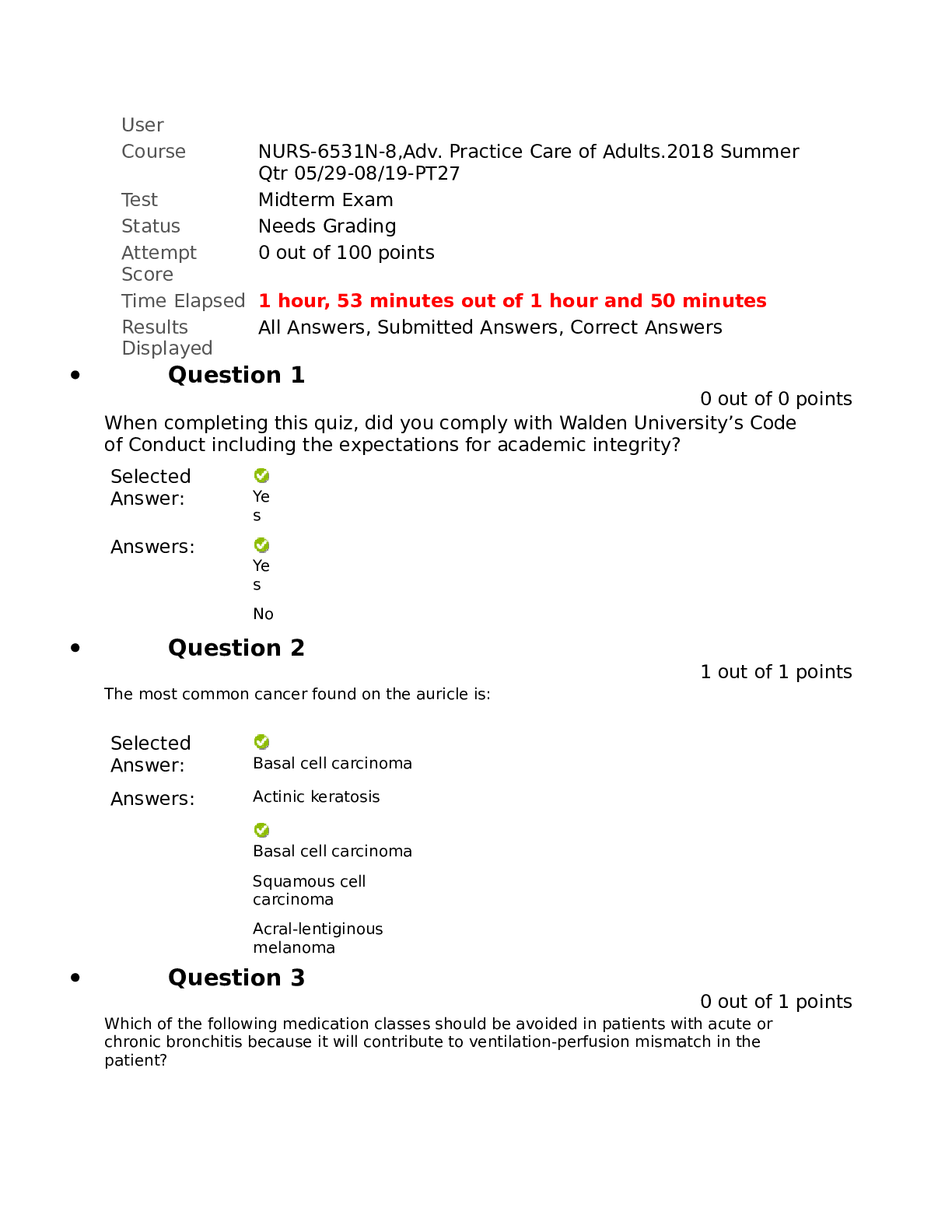Paediatrics > EXAM > Lesson 4: Basic Life Support for Children and Infants Complete Q & A (All)
Lesson 4: Basic Life Support for Children and Infants Complete Q & A
Document Content and Description Below
CPR/AED protocol infant Ans- someone under the age of 1 CPR/AED protocol child Ans- age of 1 to the onset of puberty as evidenced by breast development in girls and underarm hair development in boy... s (usually around the age of 12). BUT be careful because the AED pad varies by age and weight. CPR/AED protocol adolescent Ans- someone from the onset of puberty through adulthood. Most common causes of cardiac arrest in pediatric? Ans- respiratory emergencies, congenital heart disorders and trauma. preventable injury (such as trauma, drowning, choking or electrocution). CPR, starting with compressions, should be initiated within 10 seconds of recognizing cardiac arrest. Ans- Early, high-quality CPR You initiate CPR on an 11-year-old female patient who shows signs of puberty, including breast development. Which BLS guideline should you follow? Ans- Adult A 4-year-old child is unresponsive. Her pulse rate is 65 bpm, but she is not breathing normally. Which of the following actions are appropriate? Ans- -Deliver 1 ventilation every 3 to 5 seconds -Check the pulse and breathing about every 2 minutes You would use pediatric AED pads for which children? Ans- -2-year-old weighing 27 lbs -5-year-old weighing 43 lbs An 8-year-old child experiences cardiac arrest. On which area would you would complete a pulse check? Ans- carotid artery (neck) You come upon a child who has collapsed. The child is not breathing normally and does not have a pulse. You are alone and have no immediate access to a phone or other form of communication. Which action would you do first? Ans- Perform about 2 minutes of CPR, starting with chest compressions. You and another provider are performing CPR on an infant who is in cardiac arrest. He does not have an advanced airway in place. You demonstrate appropriate technique for high-quality CPR by performing _____ compressions and 2 ventilations. Ans- 15 A child is unresponsive and not breathing. You and another provider are present. You stay with the child to begin CPR. Which actions would be appropriate for the second provider to do? Ans- -Retrieve the AED and BVM. -Activate EMS or the resuscitation team What is the first step of the Pediatric Cardiac Chain of Survival? Ans- Prevention of arrest A 5-year-old child experiences cardiac arrest and requires CPR. You ensure that high-quality CPR is administered when you compress the c [Show More]
Last updated: 2 years ago
Preview 1 out of 12 pages

Buy this document to get the full access instantly
Instant Download Access after purchase
Buy NowInstant download
We Accept:

Reviews( 0 )
$9.00
Can't find what you want? Try our AI powered Search
Document information
Connected school, study & course
About the document
Uploaded On
Feb 11, 2023
Number of pages
12
Written in
Additional information
This document has been written for:
Uploaded
Feb 11, 2023
Downloads
0
Views
97

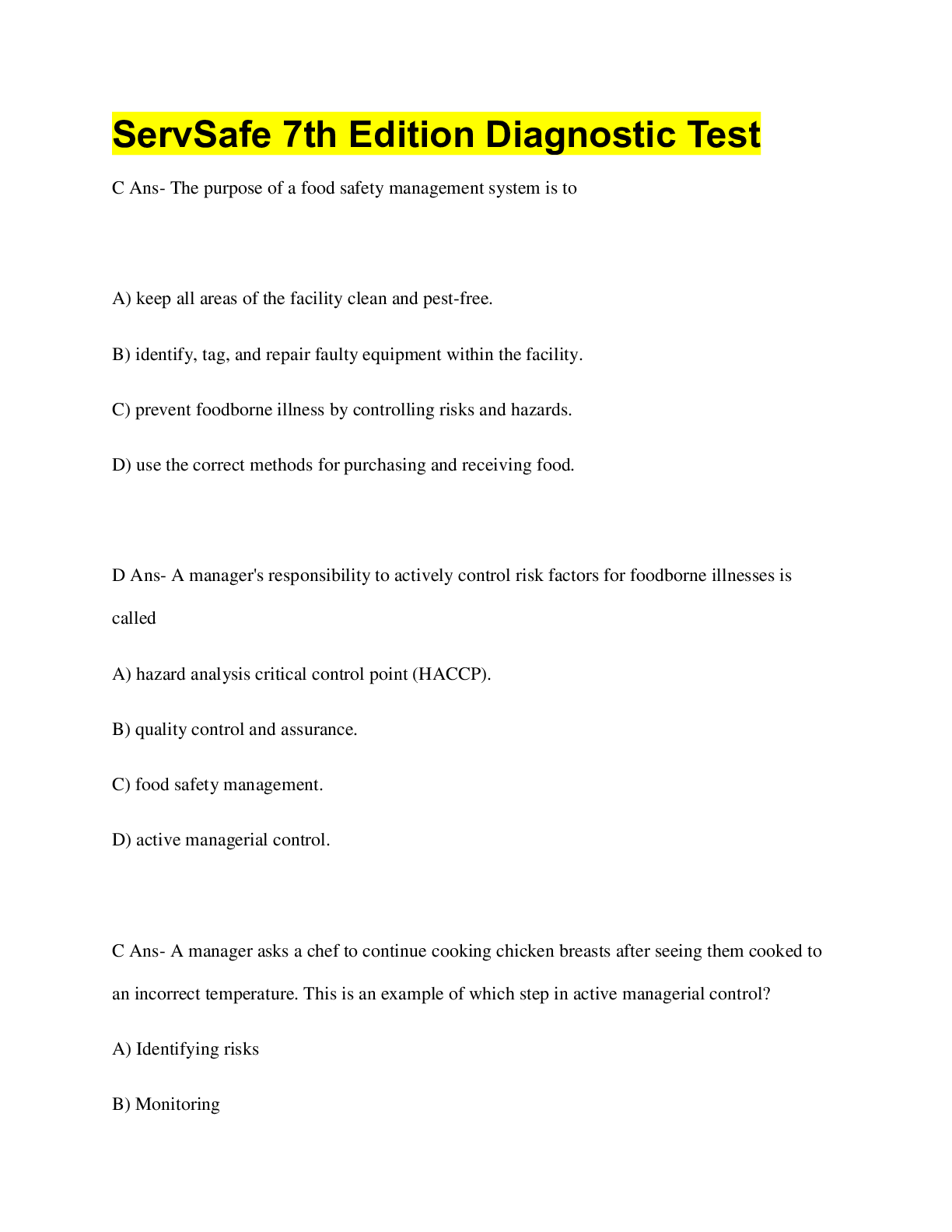


.png)
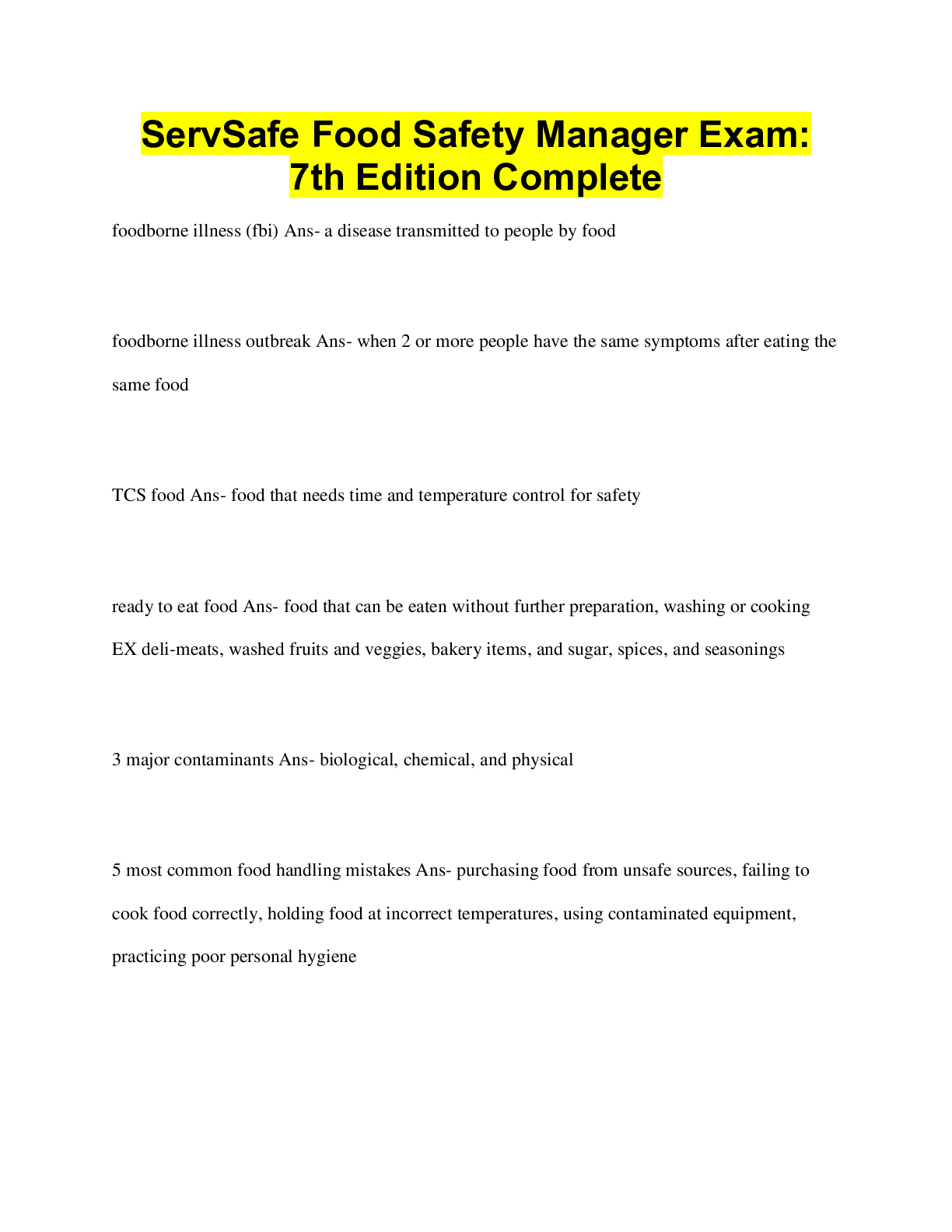
.png)

